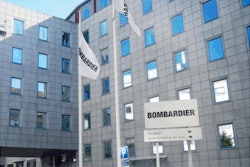Business is different today. Companies own less infrastructure, inventory and manufacturing equipment than ever. They’ve outsourced everything from customer service to supply chain. And a growing portion of their workforce isn’t even on their full-time payroll.
Business is no longer about executing a process within a company, but across an entire value chain. It’s not only about the intelligence within an organization, but the intelligence of entire communities. It’s not about automating and doing things faster, but tapping collective insights and best practices to do things better—and in entirely new ways.
Welcome to the Virtual Enterprise. And a new era for procurement.
The Chief Collaboration Officer
Cost savings. Process efficiencies. They’re synonymous with procurement – and with good reason. The function has become a strategic enabler of business value by routinely delivering them. But a new term has entered the lexicon: collaboration.
Businesses in the 21st century simply can’t achieve their cost, revenue and cash flow goals without being connected. Empowered by business networks, the Chief Procurement Officer can effectively become the Chief Collaboration Officer, organizing resources and optimizing collaboration within the enterprise and across the supply chain to achieve new levels of innovation, efficiency, and agility.
There’s no doubt that procurement today is a different game. What’s driving the transformation?
Organizational Change
Over the last decade, there has been a fundamental shift in how companies are organized. Traditional vertical integration where everything was managed internally, or structures where suppliers supplied parts and pieces and companies did all the assembly work, has transitioned to a matrixed organization where different suppliers are doing everything from initial product design, partial assembly and postponement to managing final assembly and delivery to the customer.
Globalization
Today’s supply chain is no longer right down the street. It is stretched around the globe, and that not only increases opportunity for cost-savings, efficiency and scale, but the units that need to be reported on and opportunities for risk and delays. It also requires different cultural approaches, different mores with respect to labor practices, environmental conscientiousness, and the like that need to be managed.
Technology
At the end of the day, procurement wants to spend its time working with suppliers, developing supply, capturing innovation, and driving long-year roadmaps. But all too often, the basic blocking and tackling of negotiating agreements, managing suppliers and executing orders prevents them from doing so. Technology has changed this.
Charting a New Course
When it comes to technology, there are two phases that companies go through:
First, they automate core processes—sourcing, procurement and payables—to eliminate paper and hassles and gain transparency into order, invoice and shipping status. Second, they begin looking for the next level of efficiency and reach beyond the four walls to discover, connect and collaborate with their trading partners in entirely new ways. This is where this concept of business networks comes in.
Extending the Enterprise
Companies have spent billions of dollars in personnel, reengineering and systems to improve internal process and information flows. Great strides have been made in sharing information and collaborating between employees and departments. Unfortunately, these islands of efficiency are often disconnected from the outside world and fall down where it matters most—when buying, selling or exchanging cash with other businesses.
Despite all these investments and advances, 80 percent of purchases, invoices and other transactions still take place offline or in a partially automated way, involving lots of paper and people, and resulting in higher inefficiency and costs. As a result, businesses lose $650 billion per year in missed sales opportunities, higher operating and supply chain costs, and slower cash flow.
Such inter-enterprise inefficiency impacts nearly every corporate function and has hindered the performance of even the best-performing companies. Some examples:
At the plant level and on the manufacturing floor, managers struggle with poor visibility into order status, resulting in greater stock outs, higher inventory levels and poor buying and supply chain practices.
In procurement, limited order confirmation and status from suppliers keep manufacturers from taking new customer orders due to uncertainty of parts availability and delivery.
In HR and other departments, leaders are challenged to identify, engage and retain the skills and talent pools needed to compete in a rapidly changing, global marketplace.
Accounts payable groups are drowning in paper, waiting on invoices, rekeying data into their core systems and trying to work with procurement and suppliers to resolve resulting exceptions and disputes.
Treasury wants to do more with short-term payables cash, but limited visibility into invoice status makes it impossible to forecast, plan or optimize terms.
IT struggles with managing multiple and often costly methods for integration with external suppliers, customers, banks and other partners.
Considering all these pains and inefficiencies, best-in-class organizations are beginning to prioritize use of business networks to enhance collaboration and results within their companies and across their value chains.
The Business Network Imperative
Personal networks from Facebook to Uber have made it simple for consumers to shop, share and consume in new and more informed ways. When shopping on Amazon, for instance, you don’t worry about connecting to individual merchants, banks or credit card companies. It’s all done for you within the network.
Business networks provide an equally simple and scalable way for companies to discover, connect and collaborate with the trading partners and resources they need to operate in today’s dynamic world.
Take SAP’s business network. With a few clicks, companies can shop for goods and services, place and manage orders and pay for them electronically. They can view and manage spend across all major categories and manage their entire workforce—temporary and full-time employees alike. And they can engage customers across multiple channels—all through a single, connected platform.
Just as network-powered upstarts like Square and Airbnb are creating new models that are transforming entire industries, business networks are leveraging the automation, scale and ubiquity of the cloud to further simplify the way complex business gets done.
Fueled by networks, procurement can take a much more proactive role in integrating business processes and collaborate across functions in entirely new ways that drive value. Freed from the basic blocking and tackling of negotiating agreements, managing suppliers, and executing orders, CPOs can, for instance, engage in helping to manage the financial supply chain, turning payables into a profit center because they have real-time visibility into whether an invoice is OK to pay and whether it has it been matched against purchase orders and contracts. Or extending days payable outstanding to improve the overall balance sheet while at the same time offering early payment discounts to suppliers to mitigate both financial and supply risk.
In the case of sourcing, business networks provide the ability to tap into a large global community of suppliers and get qualifying information for vetting partners they might never have known existed. And this not only leads to a high-quality supply chain, but creates greater cost efficiencies and mitigates risk—which remain critical priorities for the CPO.
The Future of Procurement
Procurement is fast becoming a platform for value creation. And aided by business networks, it will continue to transform and add strategic value beyond cost reductions and processes efficiencies. This value will come in four key areas:
- Product and service innovation
- Expanding into new and emerging markets
- Compliance and cash flow optimization
- Marketing and branding
It’s already happening. When Tata Motors set out to make the world’s most affordable car for the retail equivalent of $2,500, it was procurement that went out and identified suppliers and created innovative new materials and manufacturing assemblies to make the vision a reality. When one of the biggest mining companies on the planet laid out the uniquely bold objective to create the world’s largest mine in the outer reaches of Mongolia, it was the supply chain organization that went out and developed local supply and created entire towns, roads and transportation infrastructure where none existed.
This is the future of procurement. And business networks will drive it.
















![Pros To Know 2026 [color]](https://img.sdcexec.com/mindful/acbm/workspaces/default/uploads/2025/08/prostoknow-2026-color.mduFvhpgMk.png?ar=16%3A9&auto=format%2Ccompress&bg=fff&fill-color=fff&fit=fill&h=135&q=70&w=240)